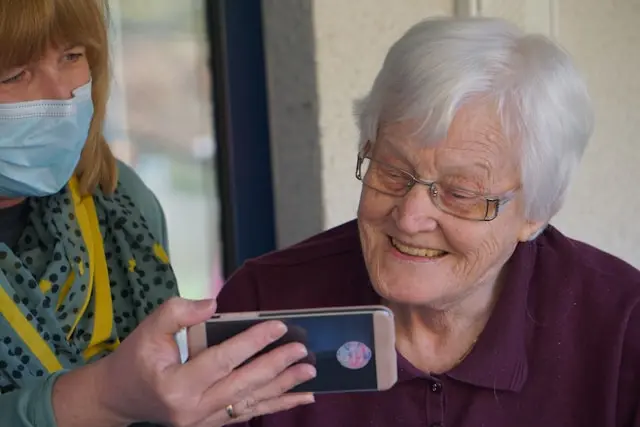Key Takeaways:
- Understanding how Assisted Living communities provide a balance of independence and support.
- Exploring the psychological and physical benefits for seniors in Assisted Living.
- Insights into choosing the right Living community and its positive influence on seniors and their families.
- Addressing misconceptions and looking at the future advancements in assisted living.
Introduction to Assisted Living
Transitioning to the golden years of life can require changes in living arrangements. This need often leads seniors and their families to consider assisted living, which allows older adults to live in a community environment while receiving various levels of support for daily activities. Winter Park, Florida, assisted living harnesses the balmy climate and rich local culture to enhance the living experience. These facilities can blend a supportive environment with ample opportunities for maintaining an active and autonomous lifestyle.
Critical Benefits of Assisted Living for Seniors
Moving into an living community often plays a transformative role in a senior’s life. One of the primary benefits is having constant access to medical support and health care services, which provides reassurance that health needs will be promptly addressed. These residences are designed for safety, with features such as emergency call systems; most staff are available around the clock. Accompanying this peace of mind is an living community’s vibrant social fabric. Seniors have abundant opportunities to interact with peers, join in on organized activities, and participate in special events, all promoting a sense of belonging and significantly enhancing their social well-being.
Differentiating Assisted Living from Other Senior Care Options
Differentiating assisted living from other types of senior care, like independent living, nursing homes, or in-home care, is crucial. While nursing homes provide an intensive medical environment for those requiring constant care, assisted living caters to largely independent seniors who require some assistance with daily tasks. Unlike independent living, which offers minimal auxiliary support, or in-home care, which doesn’t always facilitate social engagement, The living strikes a delicate balance, offering a level of care that respects the seniors’ independence while providing the necessary support for a fulfilling lifestyle.
The Role of Personalized Care in Assisted Living Facilities
Personalized care is a cornerstone principle in assisted living. It ensures that residents receive care based on their specific needs and conditions. Through individualized care plans, services are tailored to everyday tasks such as bathing, dressing, dining, and medication management. As needs change, so do the care plans. This flexible approach bolsters the quality of life and imparts a sense of dignity as residents are treated concerning their individuality, health, and preferences.
How Assisted Living Promotes Senior Independence
The living stands on the premise of encouraging as much independence as possible for its residents. It is achieved through respectfully designed spaces that allow residents to feel they reside in a home rather than a facility. They can decorate their rooms, choose their daily schedules, and be as active as they wish in the broader community. The structure of living also means that while seniors can manage their lives independently, they are assured that help is at hand whenever necessary—an invaluable aspect for many family members who find themselves in caregiving roles.
The Impact of Assisted Living on Family Members
Family members often feel a significant emotional burden when considering care arrangements for their elderly loved ones. The choice of an living facility can alleviate these concerns, as they can trust the high standard of care. This engenders a shift in family dynamics, where visits can be spent enjoying the company of one another rather than dealing with the multitude of caregiving duties. Moreover, witnessing the improved social life and enhanced independence their loved ones experience can bring great relief and joy to family members.
Choosing the Right Living Community
Determining the right living community is a process that entails evaluating a plethora of aspects. Factors that weigh heavily on the decision include:
- The proximity to family.
- Quality of healthcare services.
- An array of activities is offered.
- The overall atmosphere of the community.
Visits are crucial to gauge how residents interact with staff and each other, the cleanliness and upkeep of the facilities, and the quality of meals and programs provided. Ensuring that the community’s ethos aligns with the prospective resident’s personality, values, and lifestyle preferences is also important.
Long-Term Benefits of Assisted Living for Seniors’ Quality of Life
The long-term benefits of staying in an living community extend beyond day-to-day support. Research points to a broader impact on seniors’ overall quality of life, including prolonged independence, emotional health, and longevity. One such study by Harvard Health Publishing emphasizes the benefits of a structured and community-driven environment, especially in helping seniors adapt to life transitions.
Addressing Common Misconceptions About Assisted Living
Misconceptions about assisted living can deter families from pursuing this beneficial option. Some believe these communities to be characterless environments catering to only the frailest seniors, which is far from the truth. In reality, they are vibrant communities entire of life, with diverse populations of seniors and various activities and amenities. These facilities balance offering needed care and fostering independence and active lifestyles, which can significantly improve seniors’ happiness and fulfillment levels.
Conclusion: The Future of Assisted Living
The evolution of assisted living continues to progress, promising exciting developments in how senior care integrates technology, healthcare, and lifestyle. As we look into the future, it is clear that these communities will become even more crucial in addressing the complex needs of the aging population. Staying informed on advances and trends in assisted living can help families and seniors make informed choices
